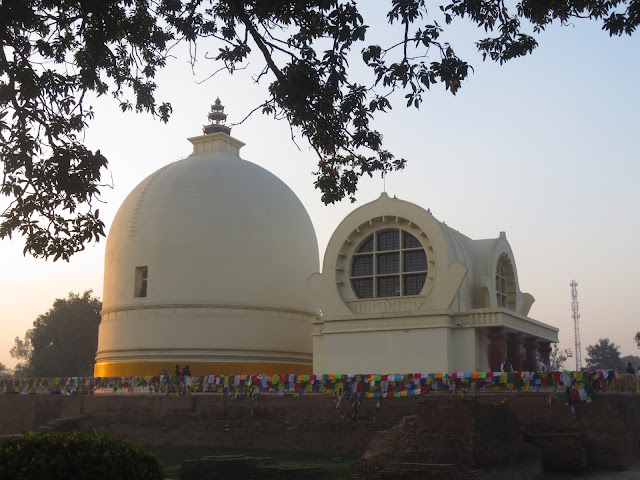From my diary (May 2010)
Most visitors get to Siem Reap by air. A comfortable way to
get to this Cambodian town, alright. But they miss a less trodden part of
Cambodia, they miss a little bit of an adventure, the opportunity to experience
something of the real country, and they miss the journey. To get to Siem Reap
from the Thai town of Aranyaprathet (near the border with Cambodia), which I
reach after a four-hour bus ride from Khorat, I have to cross the border on
foot, an interesting affair.
As soon as I am off the bus, a young Cambodian
approaches me and walks me to the border, which looks like a scene from an
American Western, dusty, teeming with people coming and going with their
rucksacks, bags and handcarts, utter confusion. I try to divine where I need to
go to get my entry visa, when the Cambodian guides me to an office belonging to
a travel company that is clearly not the customs office. I tell the young man I
wish to go to the customs office, that I do not wish to pay for a private
service, but he insists, saying it is just the same, the same price. In the end
I yield, partly because there are a couple of other tourists waiting there. I
later discover that I actually did pay more, but apparently the Cambodian
police also inflates fees, which means that in one place or the other it would have
really amounted to the same. After that the young man, who will not leave me
alone, tries to convince me to buy a ticket for a bus to Siem Reap, which sounds
exorbitant, and so I refuse. Then it is the turn of the agency dealing with my
visa to offer me transport for a slightly lower price. In the end, to keep things
simple, I cave in. As it so happens, it turns out to not have been a bad
decision as, going by what other travelers tell me later, at the bus station in
Poipet – on the other side of the border – instead of selling you a bus ticket
they try to get you into a shared taxi. Ah well. In Western terms, it never converts
to big money.
On the other side of the border, I get
on my bus to Siem Reap, and watch a landscape fly by that is wilder than the
one left behind in Thailand and also much poorer: there are few cars on the
road, the houses on either side of it are simple wooden huts, and the people – who
move around on foot, bicycle or motorbike – are in simple clothes, many
barefooted, especially the children. About four hours after setting off, I
finally reach Siem Reap.
On my first day here, I try to reach
Angkor Wat by bicycle, a six-kilometre ride, but because of heavy rain and
difficulties in finding my way through the secondary roads crossing the forest,
I arrive too late. Never mind. On days two and three, I make arrangements with
Sarath to take me around Angkor in his remorque-moto,
or tuk-tuk as they are known in
Thailand and elsewhere. Sarath is a pleasant man, who works as a tuk-tuk driver
by day and performs as a musician in the evenings. Kind and smiling, he, too,
like so many other Cambodians, has a dark personal story from the past of
which, at some point, he shares with me an episode. During Pol Pot’s regime,
when Sarath was only twelve, one day the Khmer Rouge came to his house to get
his father. Sarath and his mother, as they watched his father being dragged
away to certain death (for those who were arrested never came back), could not
even cry, or they too would have been killed. And Sarath’s father was but one
of the 1.5–2 million Cambodians who were killed for no reason, other than the
cruel and futile one in the twisted mind of the Khmer Rouge. Sarath added that
this was only one among countless violations he had to witness during those
four years, and that it would take hours for him to tell me about the
brutalities carried out by the Khmer Rouge in those dark days...
 |
| Angkor Wat |
 |
| Angkor Wat |
 |
| Bas-reliefs along the outside walls of Angkor Wat |
 |
| Ta Prohm |
 |
Ta Prohm
|
 |
Bayon
|
 |
| Bayon |
 |
| Bayon |
 |
| One monk and three novices in front of Bayon |
 |
| One of Bayon's 216 gigantic heads of Bodhisattva Avalokitesvara |












Comments
Post a Comment